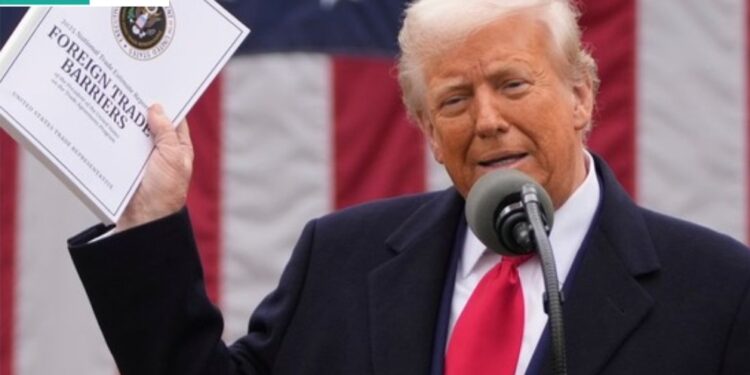US President Donald Trump has unveiled a comprehensive tariff plan aimed at recalibrating the global trade
landscape. The plan, which takes effect on April 5, imposes a 10% “baseline tariff” on imports from countries
worldwide, with higher rates applied to nations deemed to be “unfair” traders.
The tariffs are designed to protect American industries and workers, according to Trump, who has long advocated for
a more aggressive trade policy. “We’re going to make America great again, and we’re going to do it by being tough on trade,” Trump declared.
The move has sparked a mixed reaction, with some experts hailing the tariffs as a necessary measure to counter
unfair trade practices, while others warn of potential retaliatory measures from affected countries. “This is a bold
move by Trump, but it’s also a high-risk strategy,” noted one trade analyst.The tariffs will impact a broad range of
industries, including agriculture, manufacturing, and technology.
Countries like China, the European Union, and Japan are among those that will be hardest hit, with tariffs ranging from
20% to 54%.The Trump administration has exempted certain goods, such as copper, pharmaceuticals, and semiconductors, from the tariffs.
You may also like: Donald Trump Orders Dismantling of US Education Department
Additionally, countries like Canada and Mexico, which have signed trade agreements with the US, are not subject to
the new tariffs.The move has significant implications for global trade, with potential consequences for economic
growth, job creation, and international relations.
The International Monetary Fund (IMF) has warned that the tariffs could reduce global economic growth by as much
as 0.5%.As the world adjusts to the new tariff landscape, businesses and consumers are bracing for potential price
increases and supply chain disruptions. “This is a challenging time for global trade, but we’re committed to working
with our partners to find solutions,” said a spokesperson for a major US trade association.
The Trump administration has signaled its willingness to negotiate with affected countries to resolve trade disputes
and reduce tariffs. However, the path forward remains uncertain, with many experts predicting a prolonged period of trade tensions.

































